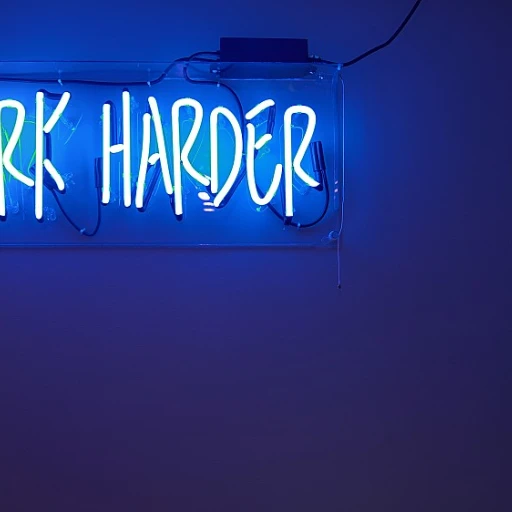
Understanding the HR Tech Stack
Decoding the Core of Human Resources Tech
In today's digital landscape, grasping the essentials of a human resources (HR) technology stack is crucial for organizations aiming to leverage analytics effectively. An HR tech stack comprises various systems and tools that help streamline HR processes, manage employee data, and enhance overall performance management.
The tech stack is not just about picking any management software or tools—it's about integrating systems that facilitate real time data analysis and decision making, supporting a data-driven approach to HR management. By understanding the core components of the stack, such as learning management and applicant tracking systems, companies can improve employee experience and engagement.
Data management plays a pivotal role in this regard. Effective HR technology ensures seamless collection, storage, and analysis of employee data, thereby improving compliance and employee performance. For organizations looking to enhance their HR tech stack, focusing on systems that offer user friendly interfaces and capabilities for customization will help optimize their processes.
Beyond the immediate benefits, building a robust technology stack forms the foundation for incorporating emerging trends in HR technology. Embracing these advancements can significantly enrich learning development strategies and overall workforce management.
For insights on optimizing learning management systems, visit our detailed guide on implementing effective HR analytics solutions.
Key Components of an HR Tech Stack
Essential Elements for a Robust HR Technology Framework
Building a comprehensive HR technology stack involves understanding the key components that support effective human resources management. At its core, a well-crafted tech stack enhances data-driven decision-making and streamlines HR processes. Here are some of the vital components to consider:- Human Resource Information Systems (HRIS): An HRIS forms the backbone of your HR system. It aids in managing employee data, ensuring compliance, and running day-to-day operations efficiently. This system will help streamline processes and improve the overall employee experience.
- Performance Management Tools: Software designed for performance management is crucial for tracking employee performance and setting objectives. These tools facilitate real-time feedback, enhance engagement, and help in aligning employee goals with organizational objectives.
- Applicant Tracking Systems (ATS): An ATS simplifies the recruitment process by managing job applications, organizing candidate data, and facilitating communication between recruiting teams. This tool ensures that your recruitment processes are efficient and that you select the best talent for your organization.
- Learning Management Systems (LMS): LMS platforms support learning development within the organization. They provide training materials, track progress, and contribute to employee skill enhancement, which is essential for maintaining a competitive edge.
- Employee Engagement Software: Tools dedicated to evaluating and enhancing employee engagement can significantly improve employee satisfaction and retention. They allow the management to gather insights on employee sentiments and foster a supportive work environment.
- Advanced People Analytics Tools: For a more in-depth analysis of employee data, leveraging advanced tools can aid in comprehending complex workforce dynamics. These tools help in building a more responsive and predictive HR strategy. Harnessing these powerful analytics tools can elevate your organization's decision-making processes.
Integrating Data for Better Insights
Effectively Connecting Data for Enhanced Insight
Incorporating data from various components of the HR tech stack is fundamental for gaining invaluable insights into human resources management. As organizations strive to improve their decision-making processes, the integration of employee data from disparate systems is essential to achieve a holistic view of performance management and employee engagement. One major challenge in building an effective technology stack is ensuring seamless data flow between systems such as applicant tracking, learning management, and performance management tools. A user-friendly system HRIS (Human Resource Information System) can centralize this information, allowing businesses to make data-driven decisions in real time.Ensuring Data Compatibility
To successfully integrate data, it’s crucial to select tools that are compatible with existing systems. When choosing management software, prioritize those that offer flexible APIs and robust data-sharing capabilities. This will help build a tech stack that supports continuous growth and scalability.Leveraging Performance Insights
By merging data from various tech tools, organizations can uncover patterns that impact employee performance and engagement. For example, analyzing metrics like time spent on learning development activities relative to employee experience can provide actionable insights that lead to improved benefits and career pathways for employees. An integrated approach not only resolves compliance and data privacy challenges, but it also enhances the accuracy of performance evaluations and fosters a culture of continuous improvement. For more guidance on crafting a unified vision that aligns team efforts, check out our detailed post on team-building activities that can assist in aligning your tech stack for maximum impact. Harnessing the collective power of your HR tech stack by integrating data across systems will profoundly affect employee satisfaction, ultimately advancing the organization’s objectives.Choosing the Right Tools for Your Organization
Aligning Tools with Organizational Needs
Choosing the right tools for your HR technology stack is crucial for maximizing efficiency and gaining valuable insights. It's essential to align these tools with your organization's specific needs and goals. Start by assessing your current HR processes and identifying areas where technology can enhance performance and employee experience. Consider the size of your organization, the complexity of your HR tasks, and the level of data integration required.
Evaluating User-Friendly Solutions
When selecting HR tech tools, prioritize user-friendly solutions that simplify tasks for both HR professionals and employees. A system that is easy to navigate will improve employee engagement and ensure that your team can efficiently manage tasks such as performance management, learning development, and applicant tracking. Look for tools that offer intuitive interfaces and require minimal training to get started.
Ensuring Data Integration and Compliance
Data integration is a critical component of an effective HR tech stack. Ensure that the tools you choose can seamlessly integrate with existing systems, such as your HRIS or payroll software. This integration will help you maintain accurate employee data and facilitate real-time decision making. Additionally, consider compliance requirements and select tools that adhere to industry standards and regulations, ensuring that your organization remains compliant.
Assessing Scalability and Flexibility
As your organization grows, your HR technology stack should be able to scale accordingly. Choose tools that offer flexibility and can adapt to changing needs, whether it's expanding your workforce or introducing new HR processes. Scalable solutions will help you avoid the need for frequent system overhauls, saving time and resources in the long run.
Leveraging Advanced Features for Better Insights
Finally, consider tools that offer advanced features such as data-driven analytics and reporting capabilities. These features will provide deeper insights into employee performance and engagement, helping you make informed decisions that drive organizational success. By investing in the right technology, you can build a robust HR tech stack that supports your strategic goals and enhances the overall employee experience.
Overcoming Challenges in HR Tech Implementation
Addressing Common Obstacles
Implementing a comprehensive HR technology stack can be a transformative step for any organization. However, this journey is not without its challenges. One common obstacle is managing the integration of various tech tools. A seamless integration is crucial for accessing centralized employee data, enabling data-driven decision-making.
Another challenge lies in ensuring the management system is user-friendly and capable of handling real-time data processing. This requires selecting tools that align with the organization's existing systems and are adaptable to future technological advancements. New tools should bolster processes such as applicant tracking, performance management, and employee engagement without complicating workflows.
Ensuring Compliance and Security
One cannot overlook the importance of maintaining compliance when implementing new HR software. Ensuring that all employee data complies with legal standards is crucial to avoid potential risks. The right management software should include features that help the organization adhere to regulatory requirements while protecting sensitive information.
Emphasizing Training and Development
A successful HR tech stack is heavily dependent on employees being adequately trained on new systems. Learning development initiatives should be prioritized to enhance the employee experience and ensure a smooth transition to the new tech stack. User-friendly training programs and continuous support can significantly ease this process.
Evaluating Performance Continuously
To reap the full benefits of an HR tech stack, it's essential to continuously evaluate its impact on performance. Regularly assessing how tech tools contribute to improved human resources processes can provide valuable insights into areas for enhancement. This ongoing evaluation will also aid in refining the technology stack to better support organizational goals.
Future Trends in HR Technology
Embracing the Future of HR Technology
The landscape of HR technology is continuously evolving, with new developments reshaping how organizations approach human resources processes and management. Staying ahead in this dynamic field requires an understanding of emerging trends that promise to enhance employee experience and performance management.
Data-Driven Decision Making: Future advancements in HR technology will heavily rely on data-driven methodologies. By integrating comprehensive tech tools and systems, companies will have real-time access to crucial employee data, enabling informed decision-making processes that benefit the entire organization. Emphasizing data transparency and employee insights ensures that the human resources function is both proactive and reactive to changing needs.
AI and Machine Learning: Artificial intelligence and machine learning are set to transform how HR departments manage everything from applicant tracking to performance management. These technologies will help automate repetitive tasks, allowing HR professionals more time to focus on strategic initiatives that drive employee engagement and learning development. As AI systems become more adept at analyzing employee data, they will offer personalized recommendations to enhance employee experience.
User-Friendly Management Systems: The demand for user-friendly management systems is expected to grow. Employees and HR professionals alike will benefit from intuitive software that streamlines workflows and reduces administrative burdens. Simplified interfaces and seamless integration across platforms will be key in building an effective technology stack that supports an organization’s unique HR needs.
Cloud-Based Solutions: With cloud-based technology taking the lead, HR systems are expected to offer increased flexibility and scalability. This transition will benefit organizations by facilitating easier access to HR functions, allowing employees and management to engage with HR tools anytime, anywhere. Transitioning to the cloud also ensures greater data security and compliance, which are paramount in safeguarding sensitive employee information.
By adopting these emerging trends in HR technology, organizations can create a tech stack that not only supports current needs but is also adaptable to future changes. Navigating this technological evolution requires careful consideration of the organization’s goals and employee requirements, ensuring that every component of the tech stack contributes to overall success and efficiency.













